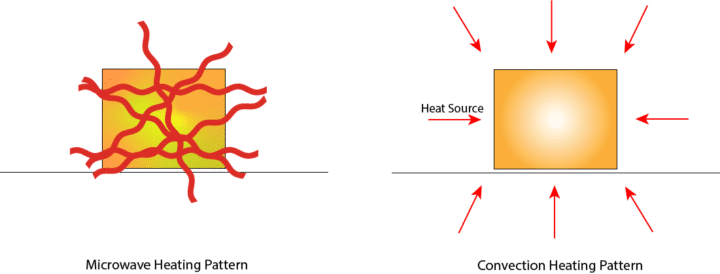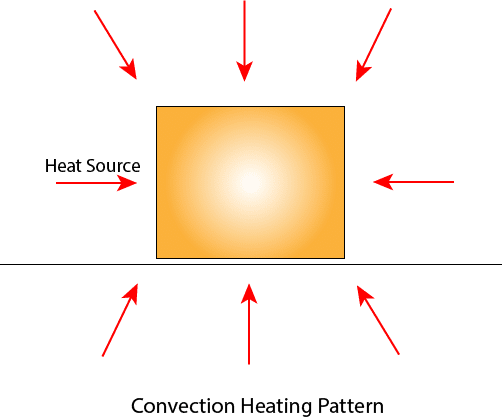In this blog post, Ferrite Microwave Technologies (FMT) explains and simplifies dielectric heating and microwave heating.
Microwave heating works volumetrically, affecting the whole mass of a product simultaneously (assuming full penetration depth). This stands in contract to convection heating, which heats the outside of a product first and then gradually works to the middle.

Excluding materials which are good conductors of electricity, heat is generated when an object is subjected to an electromagnetic field. This is caused by dielectric losses.* These losses are the result of the polarization of ionic particles in the material (millions of times per second) due to the oscillation of the electromagnetic field. This rapid polarization essentially creates molecular friction, which translates into thermal energy, increasing the temperature of the material.
Water molecules are one of the most polar in existence, and are usually more polar and therefore more “dielectrically lossy” than any other molecules found in materials containing water. As a result, they heat the fastest and most efficiently. This is why dielectric heating (read = microwave heating) is excellent for drying applications.
A Note About Dielectric Heating
*Dielectric loss quantifies a dielectric material’s inherent dissipation of electromagnetic energy (e.g. heat). It can be parameterized in terms of either the loss angle δ or the corresponding loss tangent tan δ
Industrial, Scientific, & Medical (ISM) Radio Frequency Bands
These are the center frequencies for the ISM RF bands:
Radio Frequency Heating
- 6.780 MHz; 13.560 MHz; 27.120 MHz; 40.68 MHz
Microwave Heating
- 433.92 MHz (strictly controlled in Americas)
- 915 MHz (strictly controlled in Europe)
- 2.450 MHz (most common for varied applications under 50 kW)
- 5.800 MHz; 24.125 GHz; 61.25 GHz; 122.5 GHz; 245 GHz
Full Global Listing
- 6.765-6.795 MHz (center frequency 6.780 MHz)
- 13.553-13.567 MHz (center frequency 13.560 MHz)
- 26.957-27.283 MHz (center frequency 27.120 MHz)
- 40.66-40.70 MHz (center frequency 40.68 MHz)
- 433.05-434.79 MHz (center frequency 433.92 MHz) in Americas
- 902-928 MHz (center frequency 915 MHz) in EMEA
- 2.400-2.500 MHz (center frequency 2.450 MHz)
- 5.725-5.875 MHz (center frequency 5 800 MHz)
- 24-24.25 GHz (center frequency 24.125 GHz)
- 61-61.5 GHz (center frequency 61.25 GHz)
- 122-123 GHz (center frequency 122.5 GHz)
- 244-246 GHz (center frequency 245 GHz)
To learn more about dielectric heating, please contact our support team!


